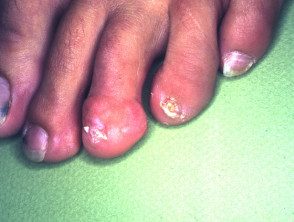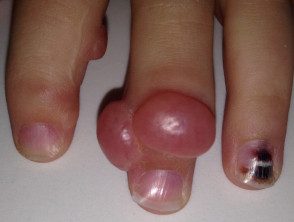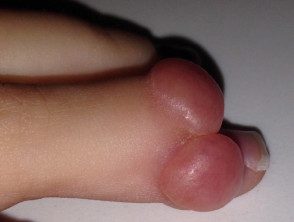What is a children's digital? fibroma?
Childhood digital fibroid (or fibromatosis) presents as single or multiple gelatinous or firm pink nodules on a baby's fingers or toes. Similar injuries to other parts of the hands, feet, arms, or other parts of the body are occasionally diagnosed. In a third of cases, they are present at birth. They are rare and are seen in both men and women.
Although children's digital fibroids They can grow to a size of 2 cm, are harmless, and generally do not cause any symptoms unless rubbed on the adjacent toe or footwear. The cause of childhood digital fibromatosis is unknown.
Children's digital fibroma

Children's digital fibroma

Children's digital fibroma

Children's digital fibroma
How is a childhood digital fibroid diagnosed?
A childhood digital fibroid is sometimes mistaken for a bone lump called exostosis. An X-ray of the toe may be necessary to see the extent of the nodule.
A skin biopsy You can confirm the diagnosis. the histology childhood digital fibroma is characteristic, showing interlocking spindle-shaped cells and collagen fibers within the dermis (middle layer of skin) and subcutaneous tissue (under the skin). The cells include unusual inclusion bodies and are believed to be myofibroblasts (the type of cell that produces muscle fibers).
What is the treatment for childhood digital fibroid?
Eventually, many fibroids re-absorb and disappear on their own for 2 to 3 years, so a conservative wait-and-see approach is best if they're not causing problems. If desired, they can be removed by a simple surgical procedure in which the lump is shaved. However, many recur after surgery.

